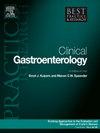Endoscopic retrograde cholangiopancreatography: A comprehensive review as a single diagnostic tool
IF 3.2
3区 医学
Q2 GASTROENTEROLOGY & HEPATOLOGY
Best Practice & Research Clinical Gastroenterology
Pub Date : 2025-02-01
DOI:10.1016/j.bpg.2025.101976
引用次数: 0
Abstract
Endoscopic retrograde cholangiopancreatography (ERCP) was initially introduced in clinical practice as diagnostic tool. However, the presence of adverse events and the development of non-invasive techniques, such as magnetic resonance cholangiopancreatography (MRCP) and endoscopic ultrasound (EUS), limited its role as a stand-alone diagnostic choice, modifying its role to the leader of therapeutic pancreatobiliary endoscopy. Despite technological advances, there are still conditions where non-invasive diagnostic modalities are inconclusive, such as indeterminate biliary and pancreatic duct strictures, primary sclerosing cholangitis functional stenoses, intraductal papillary mucinous neoplasms (IPMNs) and paediatric indications, such as congenital anatomical abnormalities. This narrative review aimed to identify and analyse indications of diagnostic ERCP, without the need for therapeutic manipulations.
内窥镜逆行胆管造影:作为单一诊断工具的全面回顾
内镜逆行胰胆管造影(ERCP)最初作为诊断工具被引入临床实践。然而,不良事件的存在和非侵入性技术的发展,如磁共振胆管造影(MRCP)和内镜超声(EUS),限制了其作为独立诊断选择的作用,使其成为治疗胰胆内镜的领导者。尽管技术进步,但仍有非侵入性诊断方式不确定的情况,如不确定的胆管和胰管狭窄,原发性硬化性胆管炎功能性狭窄,导管内乳头状粘液瘤(IPMNs)和儿科指征,如先天性解剖异常。本综述旨在识别和分析诊断性ERCP的适应症,而不需要治疗性操作。
本文章由计算机程序翻译,如有差异,请以英文原文为准。
求助全文
约1分钟内获得全文
求助全文
来源期刊
CiteScore
5.50
自引率
0.00%
发文量
23
审稿时长
69 days
期刊介绍:
Each topic-based issue of Best Practice & Research Clinical Gastroenterology will provide a comprehensive review of current clinical practice and thinking within the specialty of gastroenterology.

 求助内容:
求助内容: 应助结果提醒方式:
应助结果提醒方式:


